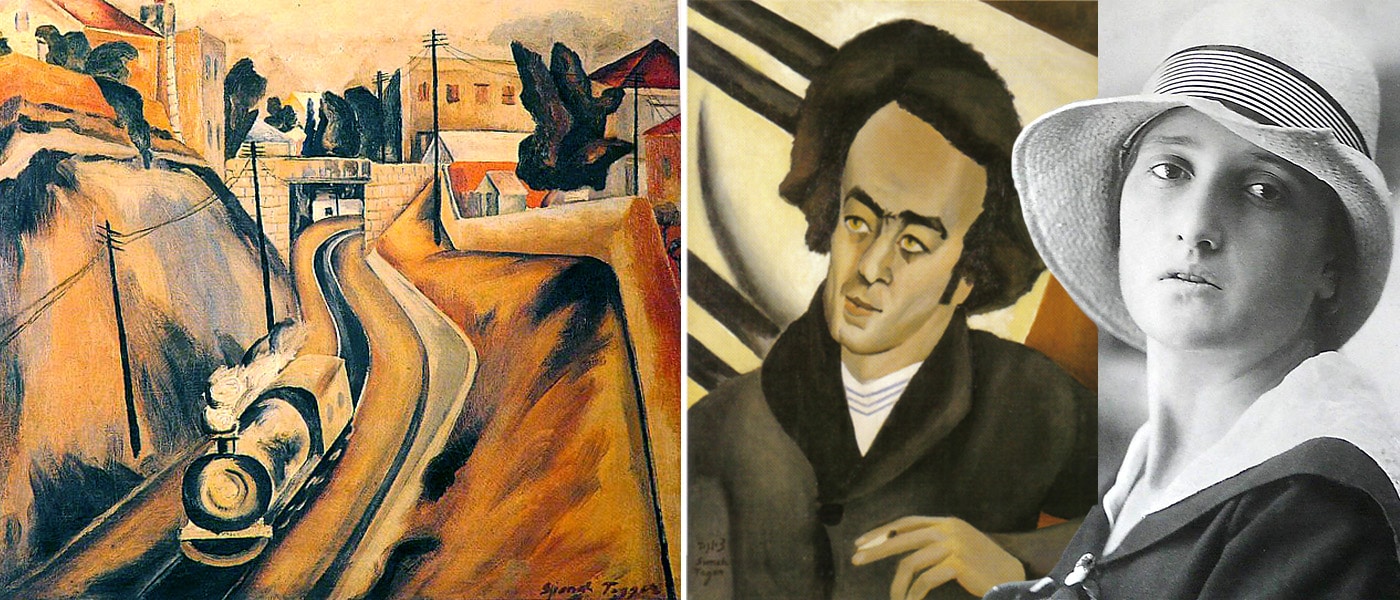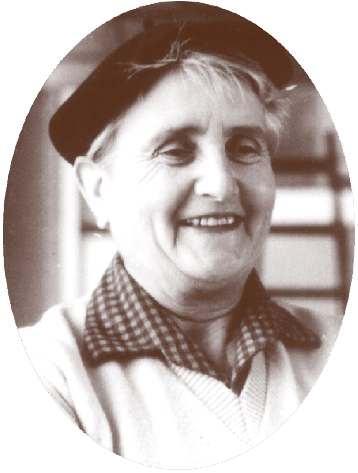

Sionah Tagger - Prologue
Written by: Carmela Rubin
 “I felt I had no right to exist without painting,” Sionah Tagger wrote in preparation for the party held in honor of her 80th birthday. This statement, which appeared in an album of her paintings published in 1981, may serve as the key to understanding Tagger as both an artist and a woman.
“I felt I had no right to exist without painting,” Sionah Tagger wrote in preparation for the party held in honor of her 80th birthday. This statement, which appeared in an album of her paintings published in 1981, may serve as the key to understanding Tagger as both an artist and a woman.
Art was Sionah Tagger’s central interest ever since she was old enough to have an opinion of her own. In the face of opposition from her parents, she insisted on studying art at the Bezalel School of Arts and Crafts, an uncommon choice in the traditional environment in which she had grown up. Her parents allowed her to move to Jerusalem only after she agreed to live with her grandfather. Traveling to Paris for the same purpose was even more unthinkable. It was only thanks to her conviction concerning the independent path she had chosen to pursue – “through painting, I connect to life,” and to her uncompromising persistence, that her parents allowed her to travel so far from the world in which she had grown up. Her strong character traits enabled her to remain true to her calling over the years and under varying circumstances.
Sionah Tagger’s most accomplished paintings are among the classics of Israeli art. She was one of the founders of the Painters and Sculptors Association, and regularly participated in local art exhibitions. She was awarded the Dizengoff Prize (1937), and represented Israel at the Venice Biennale (1948). She was also one of the founders of the artists’ colony in Safed. There is no doubt that she has earned her place in the pantheon of Israeli art. Within this select group of pioneering Israeli artists, she is distinguished both as a woman and as a native Israeli.
Galleries
Statements made by Sionah Tagger on her 80th birthday.
“I paint instead of praying. My feeling is that I have no right to exist without it. Modern painting interests me even though I am not captivated by innovation.
Yet one cannot sit at home with one’s head in the sand, ignoring everything that is going on outside. “Art involves a great degree of technology, but I believe in human beings, not in machines. However sophisticated a machine may become – it will always be controlled by a human being. “Our landscape is hot and pervaded by strong light. Our sky is gray in the summer, even though people think it is blue. The fierce, blazing sunlight creates strong, blinding lines and patches of color. Israeli-born painters will have to come to terms with all of these elements. This process, I believe, will take place.
“I came to Paris to study a Western culture that wishes to merge with the East into one Mediterranean culture. “I feel strongly rooted in the ground. “The soil of Jaffa and the sands of Little Tel Aviv, where I grew up and which I love and paint.”
צִיּוֹנָה תָּגֶ׳ר מְצַיֶּרֶת
נתן זך
הַנְּיָר, תָּמִיד הַנְּיָר אוֹ הַבַּד, עַכְשָׁיו
גַּם הַזְּכוּכִית, מִבְרֶשֶׁת, צֶבַע הֶחֳמָרִים
הַפְּשׁוּטִים, זוֹהִי נְקֻדַּת-הַמּוֹצָא: מַה שֶּׁבַּחוּץ
יִהְיֶה לְמַה שֶּׁבִּפְנִים בַּחוּץ.
הַשְׁאָר הוּא רַק שִׁירָה מְאֻמָּנָה
שֶׁל זְמַן עוֹבֵר, זֶה יוֹתֵר מֵחֲמִישִׁים, שִׁשִּׁים
שָׁנָה צִיּוּר, לִמּוּדִים, נִשׂוּאִים, לֵדָה,
אִמָּהוּת, צִיּוּר וְיַיִן בֵּיתִי, זֵיתִים גְּדוֹלִים
מָרִים. כָּךְ צָרִיךְ הָיָה לִהְיוֹת.
צִיּוֹנָה תָּגֶ׳ר מְצַיֶּרֶת. הָיוּ יָמִים קָשִׁים,
תּוֹדָה. רְאֵה אֶת הַכֶּתֶם הַצְּפָתִי
קוּבֵעַ, אֶת הַקַּו שֶׁבְּאֵילַת דּוֹחֵק, דְּיוֹקָן עוֹשֶׂה דִין
לְעַצְמוֹ. צְבָעִים כְּבָר יָפִיקוּ עוֹלָם
מִן הַמִּבְרֶשֶׁת, הַזִּכָּרוֹן, מַה שֶׁצָּרִיךְ הָיָה לִהְיוֹת
עַל הַנְּיָר, חַיֵּי הַבַּד, הַלְּבַד. כְּאִיקוֹנִין
אוֹ כְּאָמָּנוּת הַזְּקֵנִים בִּצְפַת. אִשָּׁה חַיָּה צִיּוּר
כִּמְעַט חַיִּים תְּמִימִים, מְצַיֶּרֶת שָׁעוֹת, לֵילוֹת,
צִיּוּרִים עַל זְכוּכִית כְּאִלּוּ
פָּגְשָׁה לָרִאשׁוֹנָה נְיָר מֻכָּר, עַכְשָׁיו
זְכוּכִית, בִּצְבָעִים, מִּבְּלִי דַּעַת.
הַשְׁאָר הוּא רַק שִׁירָה אוֹ הֶרְגֵּל
צִבְעוֹנִי מִיָּמִים אֲחֵרִים: צִיּוּר נִשְׁאָר בִּכְתָמִים,
בְּצֶבַע, בְּקַו, לֹא בְּמִלִּים.
